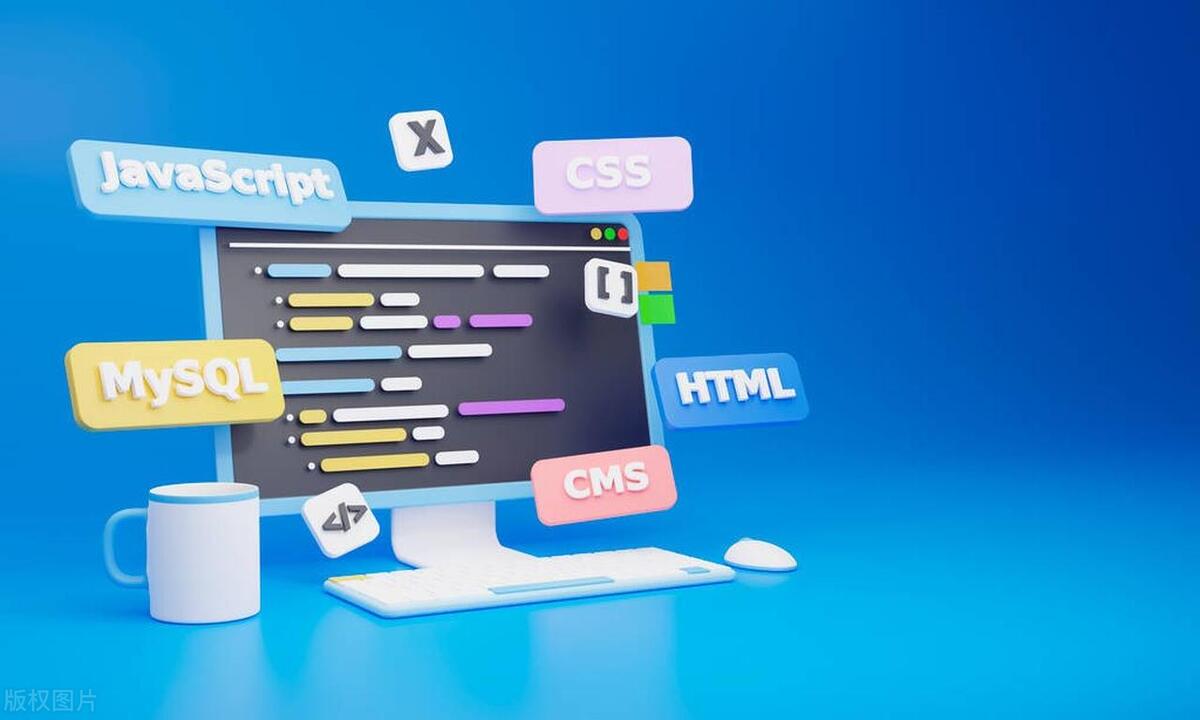Frontend Code Reviews Best Practices
Code review is crucial in front-end development, and its core lies in ensuring quality and promoting collaboration. 1. Clarify the review objectives: not only to find low-level errors, but also to verify functional integrity, code maintainability and standard consistency. 2. Tool assistance: Automatically check format and type problems through ESLint, Prettier, TypeScript, etc. to improve efficiency. 3. Pay attention to user experience and performance: review rendering performance, resource loading, barrier-free design, etc., to ensure that optimization measures are in place. 4. Encourage constructive feedback: make suggestions in a specific, suggestive and friendly tone to promote the team's growth. Doing a good job of Code Review can significantly improve project quality and collaboration efficiency, avoiding being in a formal way or causing conflicts.

Code review is an important part of quality assurance in front-end development, especially in projects that are collaborated by multiple people. If you don’t do it well, it’s easy to get trapped. Many people think that Code Review is just to "see if there are any syntax errors", but in fact it is far more than that. A truly useful review is to start from the perspectives of maintainability, performance, security and team specifications.

1. Clarify the review objectives: not just find bugs
When many front-end colleagues do Code Review, their first reaction is to see if there are any low-level problems such as spelling errors or undefined variables. This is of course important, but more importantly:
- Is the function complete : For example, a form submission logic handles loading status and error prompts?
- Is the code easy to maintain : Is component splitting reasonable? Is there any repetitive logic?
- Does it comply with project specifications : for example, are the naming method, file structure, and style class names unified?
It is recommended to quickly look at the PR description before each review to confirm the purpose of the change. Don't just focus on the code itself, understand the context.

2. Use tools to help reduce human burdens
Front-end projects usually integrate tools such as ESLint, Prettier, and TypeScript, which can automatically detect most format and type problems. Instead of having the reviewer take the time to point out "a space is missing" or "variable is not declared", it is better to leave these to the machine.
You can set up the process like this:

- Automatic formatting with Husky lint-staged before submission
- Add lint checks to CI, and do not directly intercept PR merges
- For complex projects, SonarQube can be introduced for more in-depth quality analysis
After doing this, the focus of Code Review can be on more valuable places, such as architecture design, state management, performance optimization, etc.
3. Pay attention to user experience and performance impact during review
Front-end code directly affects the content and interactive experience that users see, so the following aspects cannot be ignored during review:
- Rendering performance : Are unnecessary re-rendering used? Are
React.memooruseCallbackreasonable in React project? - Resource loading : Is the image compressed? Use lazy loading? Does JS make code split?
- Accessibility : Does the button have semantic labels? Does the form support keyboard operation?
For example, someone wrote onClick={() => someHeavyFunction()} in the component. When reviewing, it can be recommended to put the heavy function in the worker or perform anti-shake treatment.
4. Encourage constructive feedback and avoid imperative comments
Code Review is not only a process of "picking mistakes", but also a process of knowledge sharing. If you see a piece of code that can be optimized, you might as well say one more thing: "This logic can be considered as a hook for easy reuse", rather than simply saying "it should be refactored here".
A good review should be:
- Specifically : point out which line is problematic and explain why
- Suggestions : not only point out problems, but also give directions for improvement
- Friendly tone : Avoid "Why don't you use xxx?" to "Can we consider using xxx to simplify logic?"
This not only improves the quality of the code, but also helps team members grow together.
Basically that's it. Code Review is a detailed and detailed field. Doing well can improve the overall project quality and collaborative efficiency. If you don’t do well, it will become a battlefield of formalism or blame each other. The front-end area especially requires taking into account technical details and user experience. Don’t underestimate the code that is reviewed in every line.
The above is the detailed content of Frontend Code Reviews Best Practices. For more information, please follow other related articles on the PHP Chinese website!

Hot AI Tools

Undress AI Tool
Undress images for free

Undresser.AI Undress
AI-powered app for creating realistic nude photos

AI Clothes Remover
Online AI tool for removing clothes from photos.

Clothoff.io
AI clothes remover

Video Face Swap
Swap faces in any video effortlessly with our completely free AI face swap tool!

Hot Article

Hot Tools

Notepad++7.3.1
Easy-to-use and free code editor

SublimeText3 Chinese version
Chinese version, very easy to use

Zend Studio 13.0.1
Powerful PHP integrated development environment

Dreamweaver CS6
Visual web development tools

SublimeText3 Mac version
God-level code editing software (SublimeText3)

Hot Topics
 css dark mode toggle example
Jul 30, 2025 am 05:28 AM
css dark mode toggle example
Jul 30, 2025 am 05:28 AM
First, use JavaScript to obtain the user system preferences and locally stored theme settings, and initialize the page theme; 1. The HTML structure contains a button to trigger topic switching; 2. CSS uses: root to define bright theme variables, .dark-mode class defines dark theme variables, and applies these variables through var(); 3. JavaScript detects prefers-color-scheme and reads localStorage to determine the initial theme; 4. Switch the dark-mode class on the html element when clicking the button, and saves the current state to localStorage; 5. All color changes are accompanied by 0.3 seconds transition animation to enhance the user
 css dropdown menu example
Jul 30, 2025 am 05:36 AM
css dropdown menu example
Jul 30, 2025 am 05:36 AM
Yes, a common CSS drop-down menu can be implemented through pure HTML and CSS without JavaScript. 1. Use nested ul and li to build a menu structure; 2. Use the:hover pseudo-class to control the display and hiding of pull-down content; 3. Set position:relative for parent li, and the submenu is positioned using position:absolute; 4. The submenu defaults to display:none, which becomes display:block when hovered; 5. Multi-level pull-down can be achieved through nesting, combined with transition, and add fade-in animations, and adapted to mobile terminals with media queries. The entire solution is simple and does not require JavaScript support, which is suitable for large
 VSCode settings.json location
Aug 01, 2025 am 06:12 AM
VSCode settings.json location
Aug 01, 2025 am 06:12 AM
The settings.json file is located in the user-level or workspace-level path and is used to customize VSCode settings. 1. User-level path: Windows is C:\Users\\AppData\Roaming\Code\User\settings.json, macOS is /Users//Library/ApplicationSupport/Code/User/settings.json, Linux is /home//.config/Code/User/settings.json; 2. Workspace-level path: .vscode/settings in the project root directory
 css full page layout example
Jul 30, 2025 am 05:39 AM
css full page layout example
Jul 30, 2025 am 05:39 AM
Full screen layout can be achieved using Flexbox or Grid. The core is to make the minimum height of the page the viewport height (min-height:100vh); 2. Use flex:1 or grid-template-rows:auto1frauto to make the content area occupy the remaining space; 3. Set box-sizing:border-box to ensure that the margin does not exceed the container; 4. Optimize the mobile experience with responsive media query; this solution is compatible with good structure and is suitable for login pages, dashboards and other scenarios, and finally realizes a full screen page layout with vertical centering and full viewport.
 Full-Stack Web Development with Java, Spring Boot, and React
Jul 31, 2025 am 03:33 AM
Full-Stack Web Development with Java, Spring Boot, and React
Jul 31, 2025 am 03:33 AM
Selecting the Java SpringBoot React technology stack can build stable and efficient full-stack web applications, suitable for small and medium-sized to large enterprise-level systems. 2. The backend uses SpringBoot to quickly build RESTfulAPI. The core components include SpringWeb, SpringDataJPA, SpringSecurity, Lombok and Swagger. The front-end separation is achieved through @RestController returning JSON data. 3. The front-end uses React (in conjunction with Vite or CreateReactApp) to develop a responsive interface, uses Axios to call the back-end API, and ReactRouter
 Java Performance Optimization and Profiling Techniques
Jul 31, 2025 am 03:58 AM
Java Performance Optimization and Profiling Techniques
Jul 31, 2025 am 03:58 AM
Use performance analysis tools to locate bottlenecks, use VisualVM or JProfiler in the development and testing stage, and give priority to Async-Profiler in the production environment; 2. Reduce object creation, reuse objects, use StringBuilder to replace string splicing, and select appropriate GC strategies; 3. Optimize collection usage, select and preset initial capacity according to the scene; 4. Optimize concurrency, use concurrent collections, reduce lock granularity, and set thread pool reasonably; 5. Tune JVM parameters, set reasonable heap size and low-latency garbage collector and enable GC logs; 6. Avoid reflection at the code level, replace wrapper classes with basic types, delay initialization, and use final and static; 7. Continuous performance testing and monitoring, combined with JMH
 How to handle transactions in Java with JDBC?
Aug 02, 2025 pm 12:29 PM
How to handle transactions in Java with JDBC?
Aug 02, 2025 pm 12:29 PM
To correctly handle JDBC transactions, you must first turn off the automatic commit mode, then perform multiple operations, and finally commit or rollback according to the results; 1. Call conn.setAutoCommit(false) to start the transaction; 2. Execute multiple SQL operations, such as INSERT and UPDATE; 3. Call conn.commit() if all operations are successful, and call conn.rollback() if an exception occurs to ensure data consistency; at the same time, try-with-resources should be used to manage resources, properly handle exceptions and close connections to avoid connection leakage; in addition, it is recommended to use connection pools and set save points to achieve partial rollback, and keep transactions as short as possible to improve performance.
 A Guide to Java Flight Recorder (JFR) and Mission Control
Jul 31, 2025 am 04:42 AM
A Guide to Java Flight Recorder (JFR) and Mission Control
Jul 31, 2025 am 04:42 AM
JavaFlightRecorder(JFR)andJavaMissionControl(JMC)providedeep,low-overheadinsightsintoJavaapplicationperformance.1.JFRcollectsruntimedatalikeGCbehavior,threadactivity,CPUusage,andcustomeventswithlessthan2%overhead,writingittoa.jfrfile.2.EnableJFRatsta







